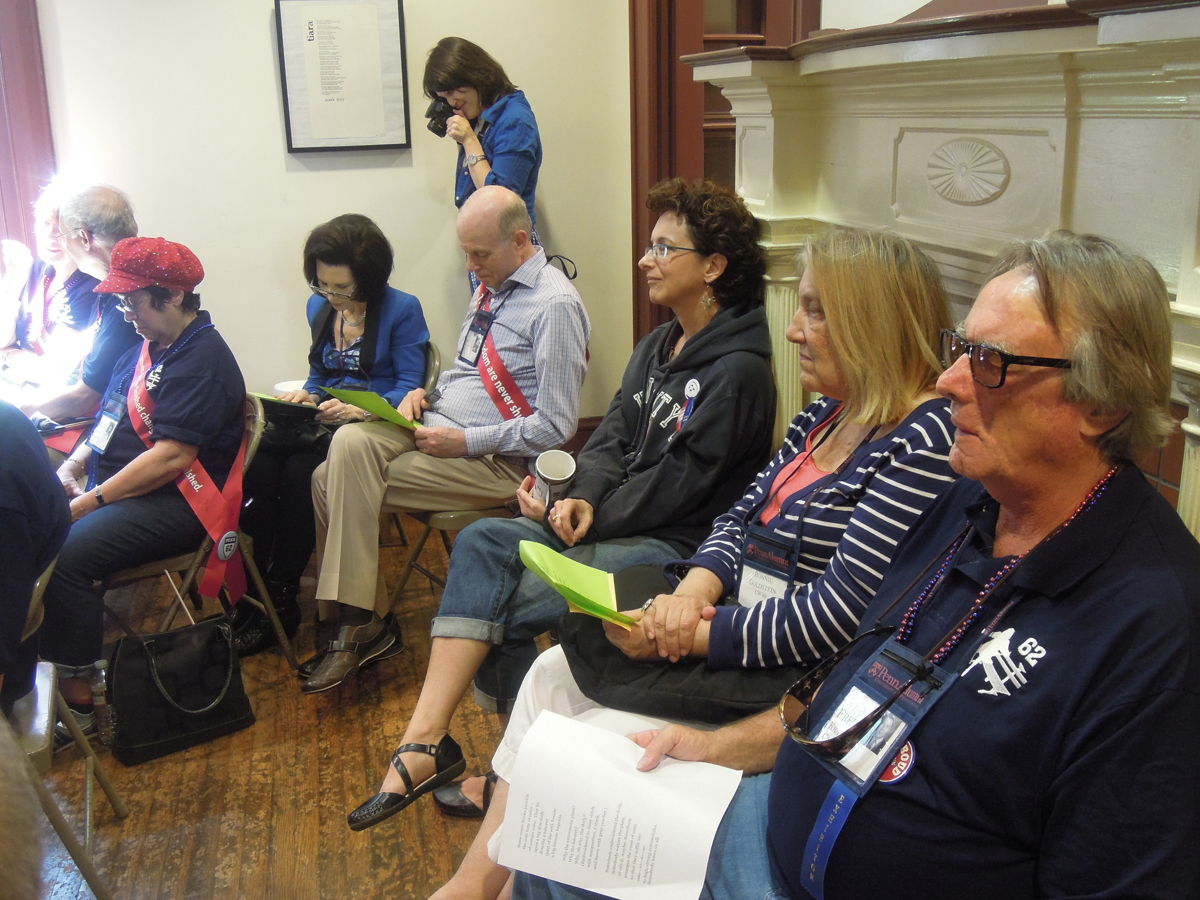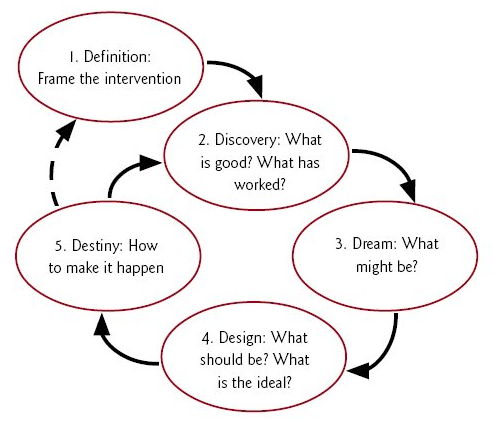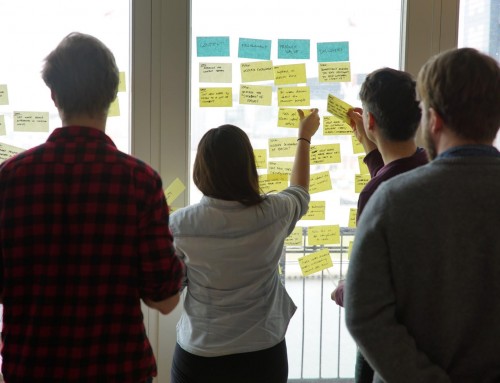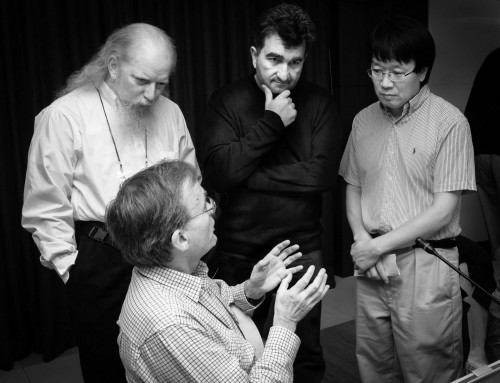Appreciative Inquiry
Description of Appreciative Inquiry
Appreciative Inquiry is a facilitation format I use frequently. Appreciative Inquiry facilitation (AI) is a model for analysis, decision-making and the creation of strategic change, AI builds on the present potential of a given person, organisation or situation to envision the future. AI relies on the positive, the best of each situation, the best in people, their Organisations, and the relevant world around them. AI is used to discover strengths and assets and how we might use them to achieve our future.Appreciative Inquiry challenges organisations to take a strengths-based approach when assessing and adapting their services or products. Instead of taking a problem-solving approach, Appreciative Inquiry offers a possibility focus, a move from “what is” to “what could be”.
Based on a powerful, affirmative question, people interview each other to uncover experiences that resemble what we want to create.
Rules of Appreciative Inquiry
Appreciative inquiry attempts to use ways of asking questions and envisioning the future in order to foster positive relationships and build on the present potential of a given person, Organisation or situation.
Appreciative inquiry utilizes a cycle of four processes, which focus on what it calls:
- DEFINITION: Establishing the focus and scope of the inquiry.
- DISCOVER: The identification of organisational processes that work well.
- DREAM: The envisioning of processes that would work well in the future.
- DESIGN: Planning and prioritizing processes that would work well.
- DESTINY (or DEPLOY): The implementation (execution) of the proposed design
When to use Appreciative Inquiry
- Help to move a group that is stuck in “what is” toward “what could be”, and explore possibilities from a fresh, positive vantage point.
- Strategic and project planning internally and externally with partners and stakeholders.
- Community development.
- Asset mapping.
- Program assessment, monitoring, and evaluation.
- Team-building: helping teams to see a new way of working together.
- Fostering innovation.
- Conflict resolution.
- Network building.
Facilitator Role
- Frame the intervention: establishing the focus and scope of the inquiry.
- Assist the client to identify his strength.
- Elicitate stories of the client at his best.
- Guide the client by collecting the wisdom and imagining his future.
- Assist the client bridging to the future based on the best of the past and the present.
- Support the client in making it happen.
 Give your colleagues, co-workers, and friends a smile — give them appreciation! Use this free, printable Plays-In-Business appreciation card template.
Give your colleagues, co-workers, and friends a smile — give them appreciation! Use this free, printable Plays-In-Business appreciation card template.: kellywritershouse, via flickr.com • U.S. Embassy Valletta, Malta, via flickr.com • kstoolkit.org, Appreciative Inquiry Process, .









Leave A Comment